How can you be successful in your Texas winter cutback? A little work in mid-late winter will result in a more beautiful and healthy landscape for the rest of the year. Each yard is different, in fact, each yard can have its own microclimate where plants should be treated differently. We want to help give you some guidelines on how to treat your plants over the winter, but remember these aren’t hard and fast rules.
When should you prune?
The best time to prune is during the winter, after the first hard freeze. Pruning during this time ensures plants are ready to grow once warmer weather arrives. Be cautious not to prune too early, as cuts made before the coldest weather can lead to damage.
How do we define a “hard freeze”? Generally if it gets down to roughly 18 degrees Fahrenheit your plants will really start to feel it.
Caveat – micro-climates are real. What is a micro-climate? One area can have a very different response to the weather depending on environmental factors (sun, shade, proximity to water (thermal warming/cooling), exposure to wind, depth of soil, etc).
Why should you prune?
- To train the plant
- To maintain plant health
- To improve the quality of flowers, fruit, foliage or stems
- To restrict growth
How to Prune Specific Plants
Perennials
Herbaceous perennials are plants that die back to the ground during winter and grow back in the spring, making them ideal candidates for pruning. Examples include Lantana, Cannas, Salvia, Mexican Mint Marigold, Turks Cap, Plumbago, and Ginger.
The first hard freeze will kill the top growth of several flowering and herbaceous perennials. Even if the plant is not entirely killed to the ground, it is good pruning practice to cut them back.
Trim off dead and winter-damaged portions of perennial flowers. There is no specific universal height to prune these plants back to. Instead, prune back until you find green inside the bark.
Herbaceous perennials with woody, thick branches (Sages, Mexican Oregano, Turk’s Cap) should be pruned back by at least half or more every year in late Winter. Additional examples of plants to cut back to 6 inches include Esperanza, Salvias, and Mexican Bush Sage.
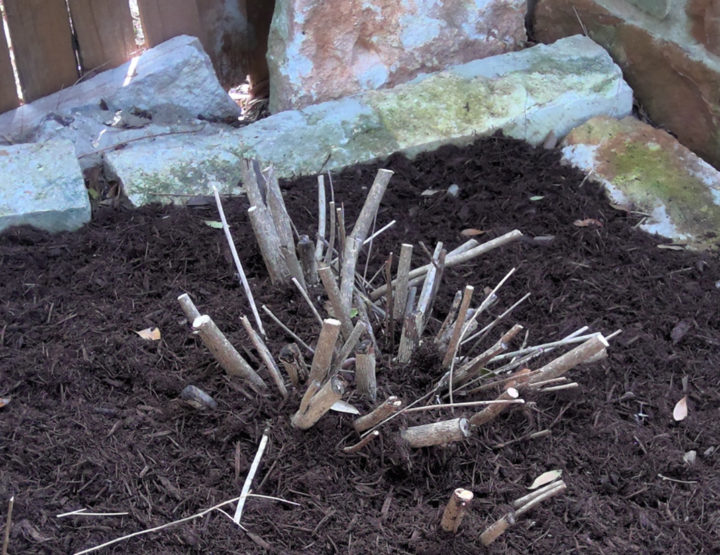
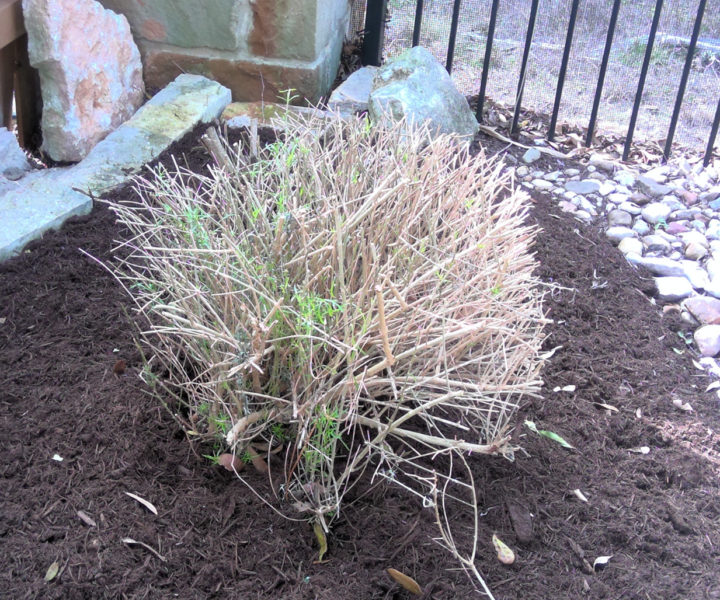
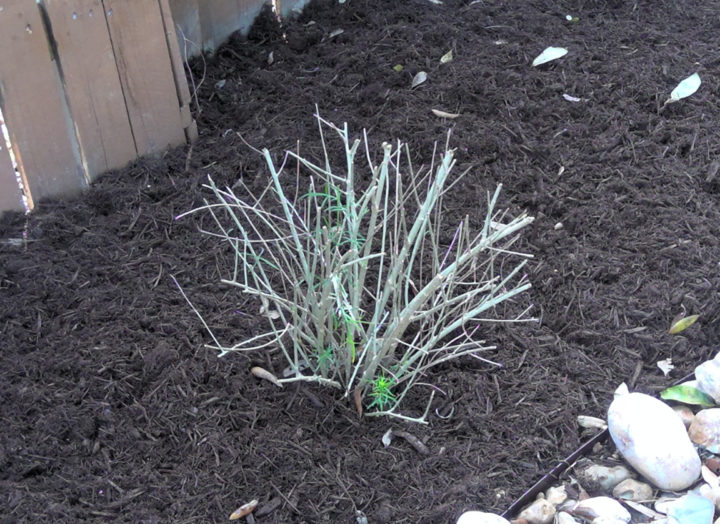
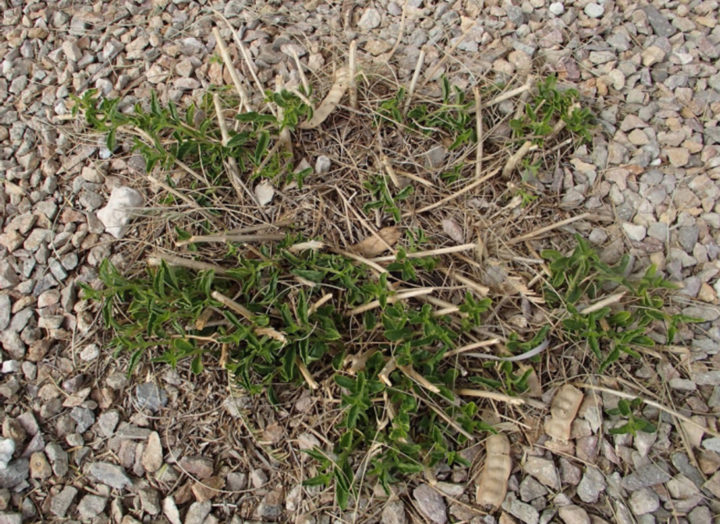
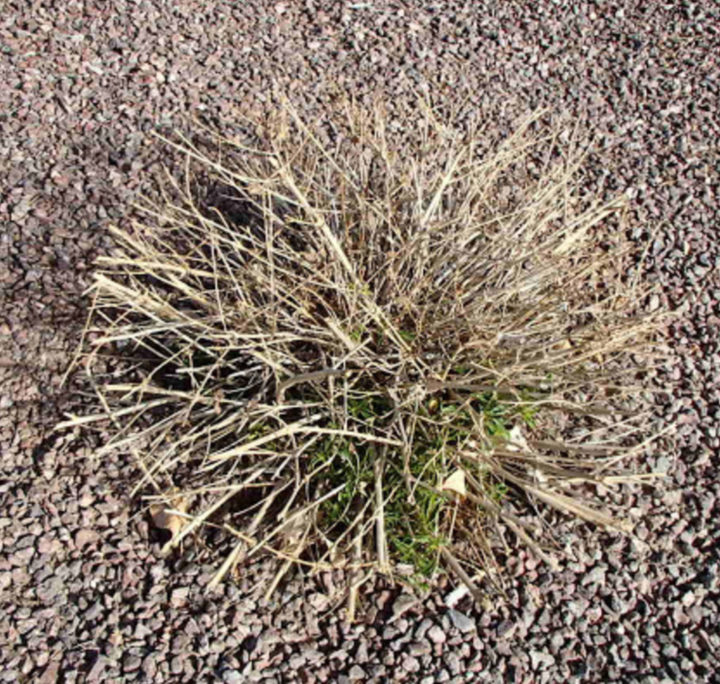
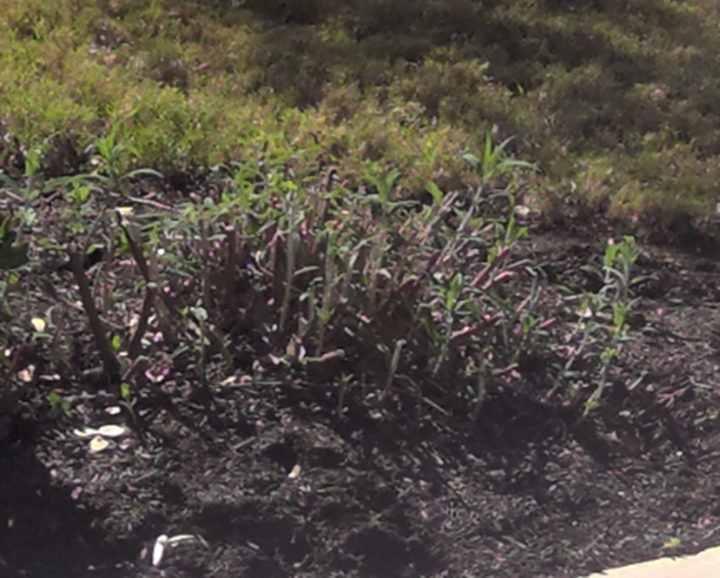
Ornamental grasses
For many ornamental grasses, cut back to 6 or 12” from the ground. Commonly used ornamental grasses we cut back in winter include Muhly, Maiden, Fountain, and Miscanthus.
We do not cut back Pampas grass. Likewise, Bicolor Iris looks like ornamental grass but it is not, and should never be cut back.
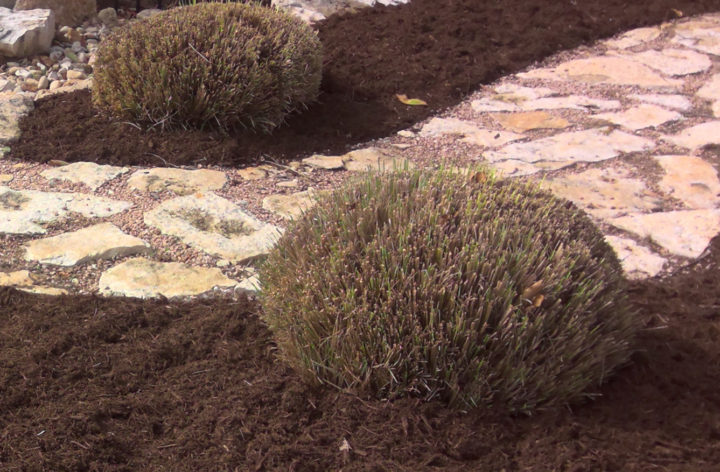
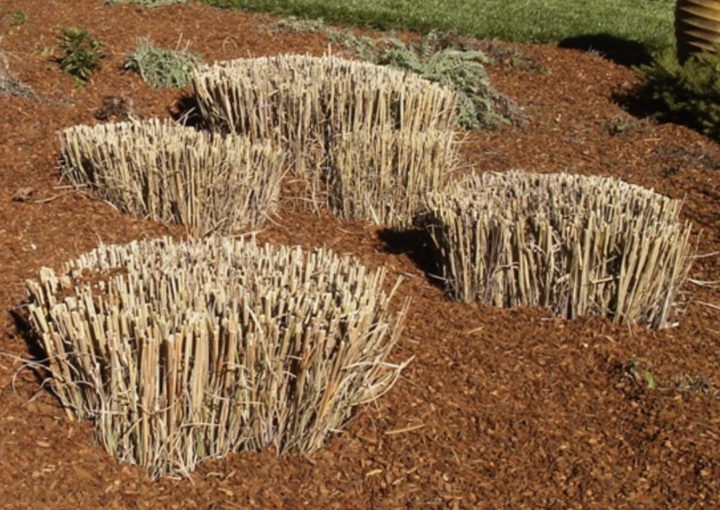
Crape Myrtles
Topping crape myrtles can destroy their natural beauty as they do not require pruning to bloom. Minor pruning is optional in late winter to remove dead and twiggy growth, rubbing branches and suckers.
Do not remove any branch larger than a pencil in diameter unless there is a good reason. (Some people like to call this “crape murder!”)
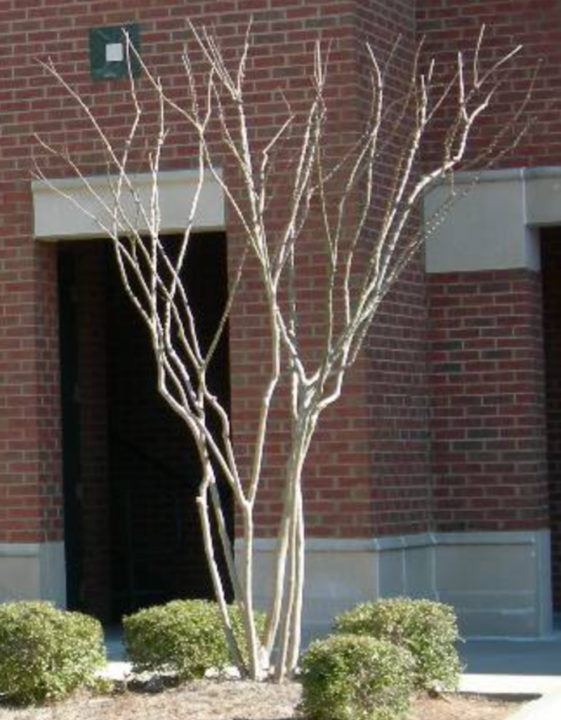
Roses
Roses should be cut back dramatically before Valentine’s Day (what a convenient way to remember it). Remember that blooming only occurs on new growth. This is why people will often prune their rose shrubs, proper pruning will result in a double stem and double the blooms. If no annual cutback on pruning is completed then there will only be blooming on the top / new growth. So be aggressive on the cut back!
The temptation is to under do it but the result is less blooms and a larger shrub. We often see over grown roses that are the result of years of under-pruning.
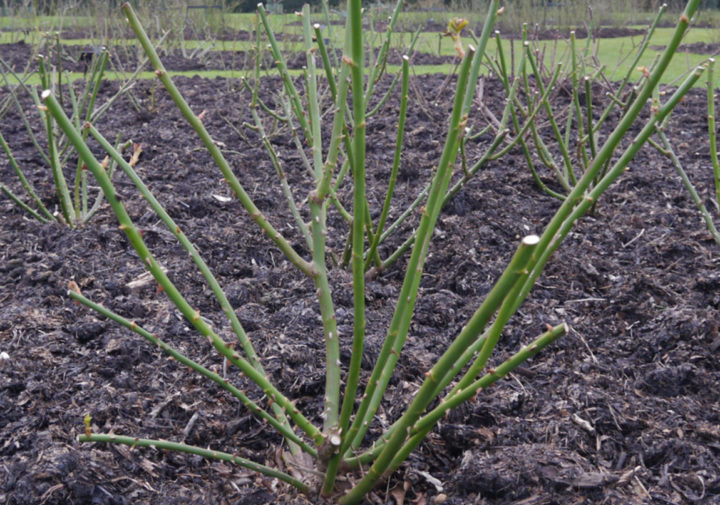
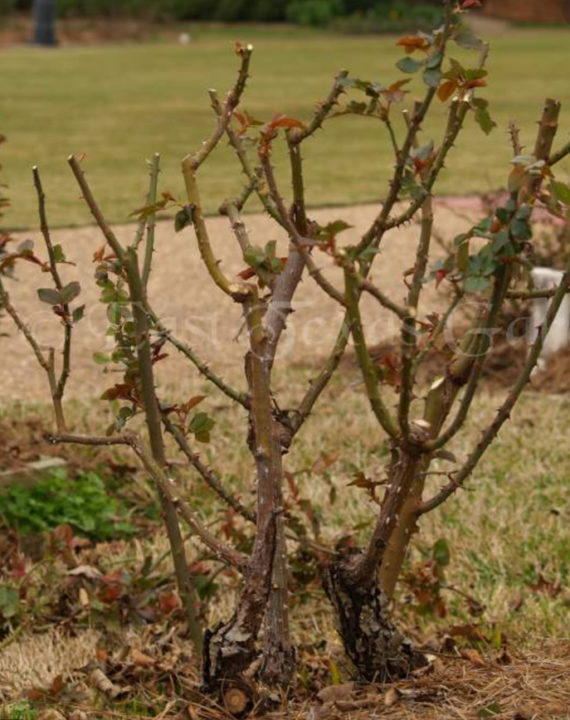
Groundcovers
Liriope and monkey grass stay green year-round, however, if they look tattered and brown they can be cut back to 2-3” tall. Asian Jasmine and most ivy can be cut back to a few inches high but it is only recommended if the plant looks ragged. For Cast Iron Plant you only need to remove old brown stalks to the ground.
Summer-blooming shrubs
These plants bloom on shoots that grow from spring (same year or season’s growth) and should be pruned in late winter. Examples include Butterfly bush, Crape Myrtles, Abelia, Hydrangea,(most) Roses, and Vitex.
Side note: Crape Myrtle season is coming. We generally trim Crape Myrtles in February. More on this to come!
Let’s get to work!
We hope this guide can help you as you decide what plants should be pruned and by how much (if at all.) Don’t be afraid to be proactive and shape your plants and shrubs so that their natural beauty will shine forth this spring.
If you have questions about pruning or other landscaping topics, feel free to contact us for a free estimate.

